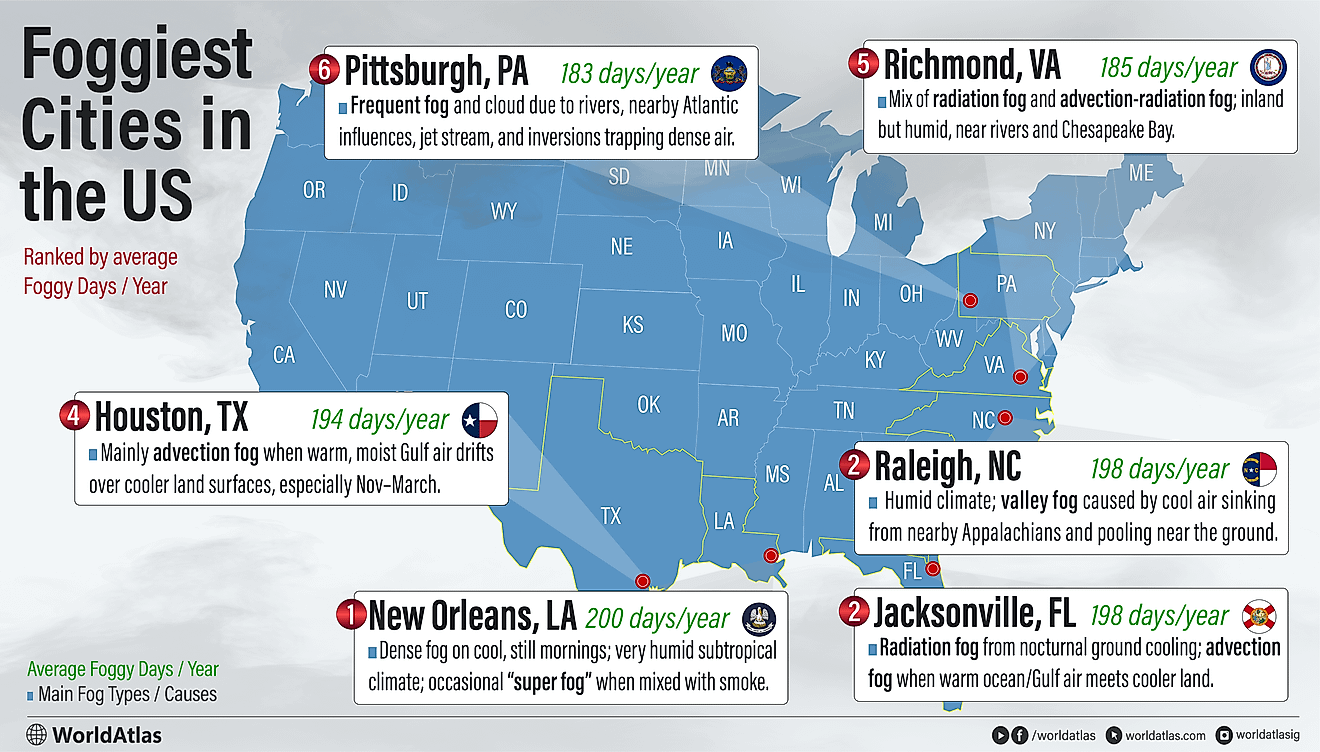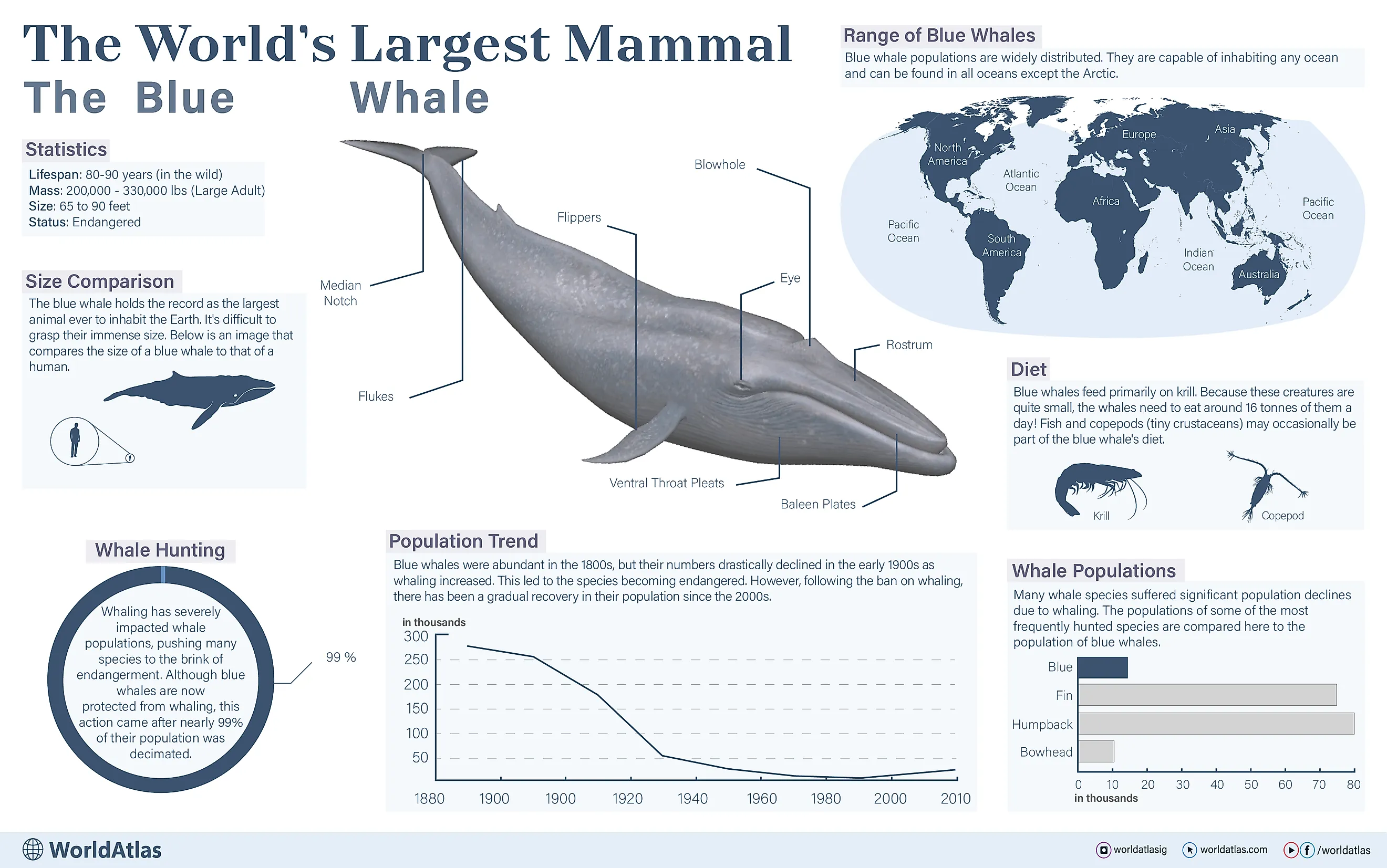
What Is The Largest Mammal?
The blue whale, the largest animal ever to exist, can reach up to 34 meters (110 feet) in length and weigh up to 430,000 pounds (199 tonnes), surpassing even the largest dinosaurs in size. Typically gray in color, blue whales appear light blue when submerged. They inhabit oceans worldwide, playing a crucial role in marine ecosystems, primarily feeding on krill and other tiny crustaceans. They were listed as endangered under the Endangered Species Act in 1970.
5 Largest Mammals on Earth
| Rank | Mammal | Average mass (tonnes) |
|---|---|---|
| 1 | Blue whale | 110 |
| 2 | North Pacific right whale | 60 |
| 3 | Southern right whale | 58 |
| 4 | Fin whale | 57 |
| 5 | Bowhead whale | 54.5 |
Size and Appearance

Although blue whales can occasionally measure up to 34 meters (110 feet), they more commonly measure between 24 to 27 meters (80 to 90 feet). Their weight also typically ranges between 91,000 to 136,000 kilograms (200,000 to 300,000 pounds). To put this massive size in perspective, they are about three bus lengths long, with their heart alone being about the size of a small car. Female blue whales are generally larger in size than the males.
While they are grey in color, they appear light blue when underwater, resulting in their name as the blue whale. They also display a distinctive blue-gray mottling pattern, which helps differentiate them from other blue whales. In shape, they are long and slender, with long pectoral flippers and a very small dorsal fin.
Habitat
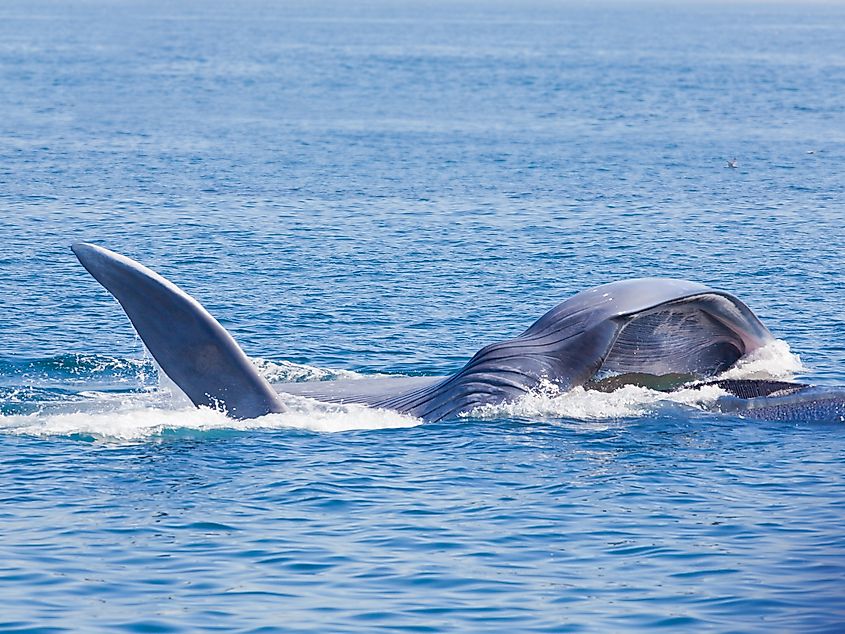
Blue whales inhabit nearly all of the world's oceans, with the exception of the Arctic Ocean. They typically travel either alone or in small groups, often in pairs. The blue whale species can be divided into distinct populations. The North Pacific population inhabits waters ranging from Alaska and California to Japan and Russia. In contrast, the eastern population group migrates, spending the winter months near Mexico and Central America and the summer months off the U.S. West Coast. Blue Whales can occasionally be spotted off the coasts of California during the summer and fall.
Diet
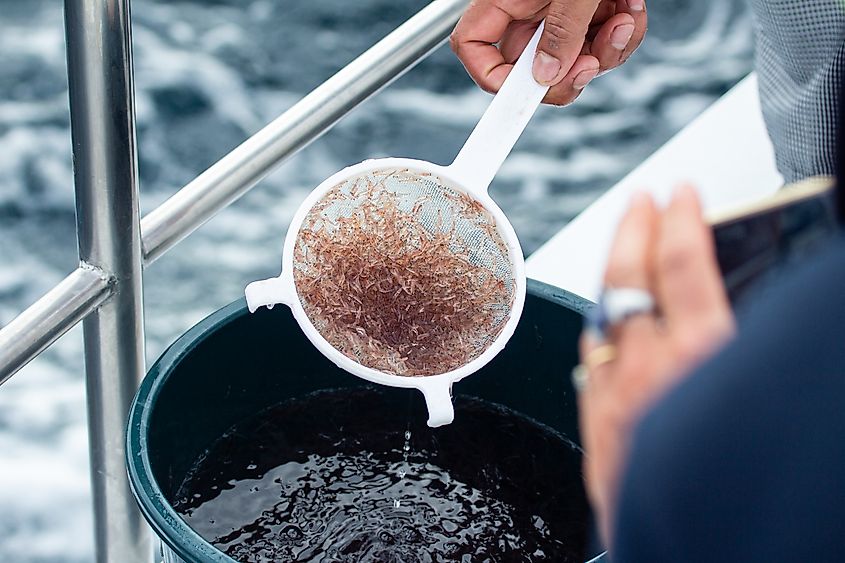
Krill, small shrimp-like creatures, are the primary food source for blue whales, though they occasionally feed on copepods (tiny crustaceans) and fish. When foraging, blue whales swim toward schools of krill, filtering their food by opening and closing their mouths around the krill while inflating the folds of skin in their throats, known as throat pleats. Once their mouth is closed, blue whales use their tongue to expel the water, trapping the krill inside with their bristly baleen plates. During the feeding season, they can eat up to about 16,000 kilograms (35,000 pounds) of krill in a single day.
Vocalization and Behavior
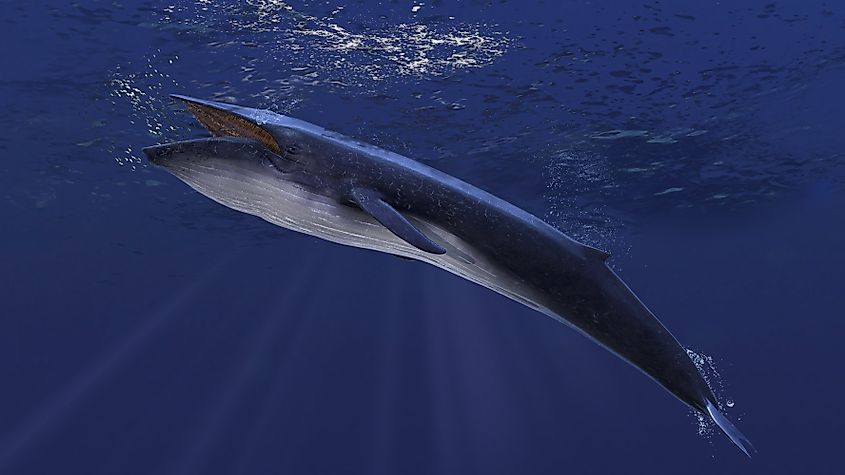
While feeding, blue whales typically move at about 8 kilometers per hour (5 mph), though they can accelerate to 32 kilometers per hour (20 mph) in short bursts. Known for being one of the loudest animals on Earth, blue whales emit a series of groans, moans, and pulses, with sounds that can travel and be audible to other whales for up to 1,600 kilometers (1,000 miles). Scientists believe these vocalizations are used for communication and possibly for sonar navigation in the darker depths of the ocean. While their exact life expectancy remains uncertain, it is estimated to be around 80 to 90 years.
Breeding and Calf Development
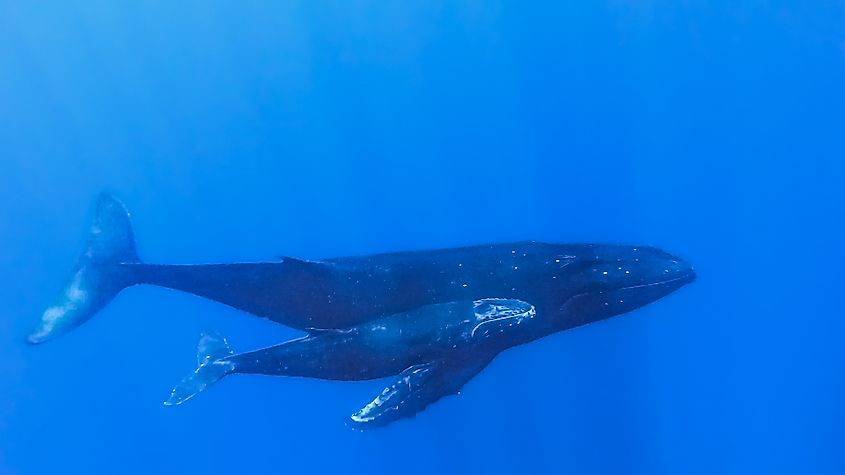
Female blue whales reach reproductive maturity between the ages of 5 and 15 years and are capable of giving birth once every two to three years. A pregnancy lasts about a year, with blue whale calves born in lower latitudes between December and February. At birth, a blue whale calf already measures around 7 meters (23 feet) in length and weighs 2,250 to 2,700 kilograms (5,000 to 6,000 pounds). A calve will stay with its mother until it is around six or seven months old, at which point it has doubled in length.
Conservation
The blue whale is currently considered an endangered species. Due to harpoon cannons and a desire for whale blubber in the early 19th century, the blue whale population dropped significantly, with nearly 30,000 blue whales killed in 1931. Due to extreme population scarcity in 1966, the International Whaling Commission declared them a protected species worldwide. Today, due to protection efforts, there are around 3,000 to 4,000 blue whales in the northern hemisphere and 5,000 to 10,000 in the southern hemisphere.
Several factors continue to threaten the species today, including vessel strikes, which pose a significant risk to blue whales near ports and shipping lanes, entanglement in fishing gear, which can cause fatigue, hinder feeding, and lead to injury, as well as environmental threats such as climate change and pollution.
Other Large Mammals
The next four largest mammals are also whales: The North Pacific right whale, the southern right whale, and the fin whale.
North Pacific Right Whale
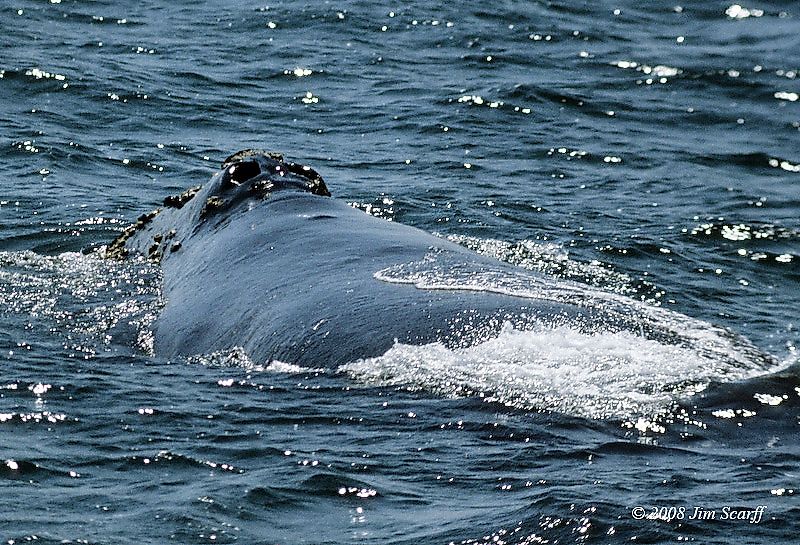
The North Pacific right whale typically reaches lengths of 14 to 20 meters (45 to 64 feet) and can weigh up to 100,000 kilograms (220,000 pounds). Generally found in the Central North Pacific and the Bering Sea, it is one of the rarest whale species and marine mammals, listed as endangered, with an estimated population of fewer than 500 remaining. They have stocky bodies, and broad tails, and are generally black in color, with some individuals displaying white patches on their underbellies.
Southern Right Whale
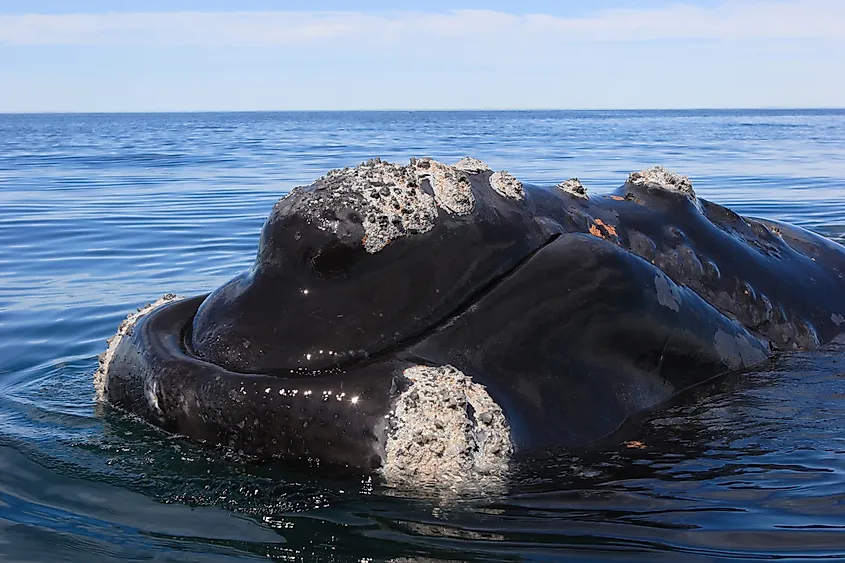
The southern right whale is the third largest mammal, measuring between 13 and 17 meters (43 to 56 feet) and weighing up to 80,000 kilograms (176,000 pounds). Similar to the North Pacific right whale, their bodies are stocky and black, with a white underside. Currently, the species is considered endangered under the Endangered Species Act and depleted on the Marine Mammal Protection Act. They reside throughout the southern hemisphere.
Fin Whale
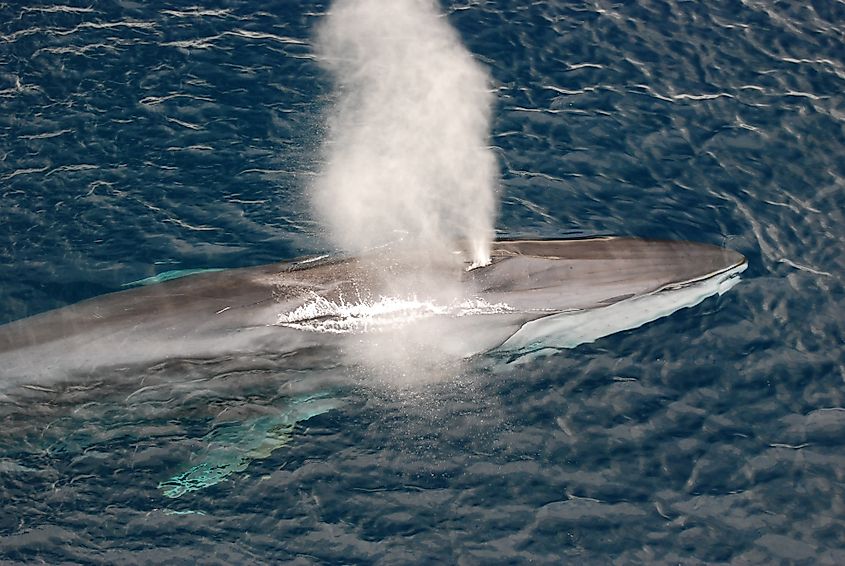
The fin whale is the fourth largest whale by weight and the second largest by length. It typically measures between 23 and 26 meters (75 to 85 feet) in length and weighs between 40,000 and 80,000 kilograms (88,000 to 176,000 pounds). Their bodies are sleek and streamlined, featuring a V-shaped head and a tall, hooked dorsal fin located near the end of their back. They reside throughout all major oceans in deep, waters far from shore. Although fin whales are not under the threat of whaling, they continue to be endangered under the Endangered Species Act.
Bowhead Whale
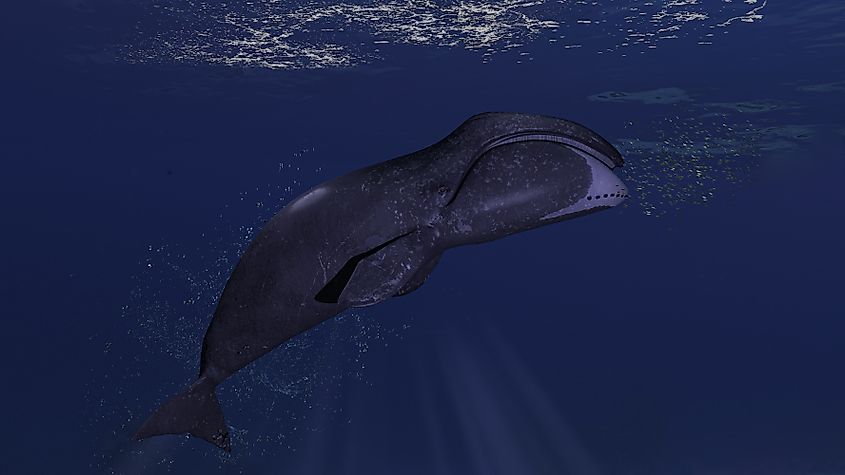
The bowhead whale can grow up to 19 meters (62 feet) in length and weigh as much as 91,000 kilograms (200,000 pounds). Its body is dark, distinguished by white chin markings, and it lacks a dorsal fin. They have the thickest blubber of any whale, 43 to 48 centimeters (17 to 19 inches) thick. Their primary habitat is in the Arctic and subarctic waters, where they are the most adapted large whale species to icy conditions. The Bowhead Whale was listed as an endangered species under the Endangered Species Act in 1973.
Final Thoughts
The blue whale, along with other large whale species such as the North Pacific right whale, fin whale, and bowhead whale, exemplify the incredible diversity and scale of life in our oceans. Despite their immense size, these whales face numerous threats. Protecting these giants of the sea is not only crucial for their survival but also for maintaining the health of marine ecosystems. As we continue to learn more about these magnificent creatures, efforts to conserve them must remain a priority, ensuring that future generations can witness the awe-inspiring presence of these marine mammals.











